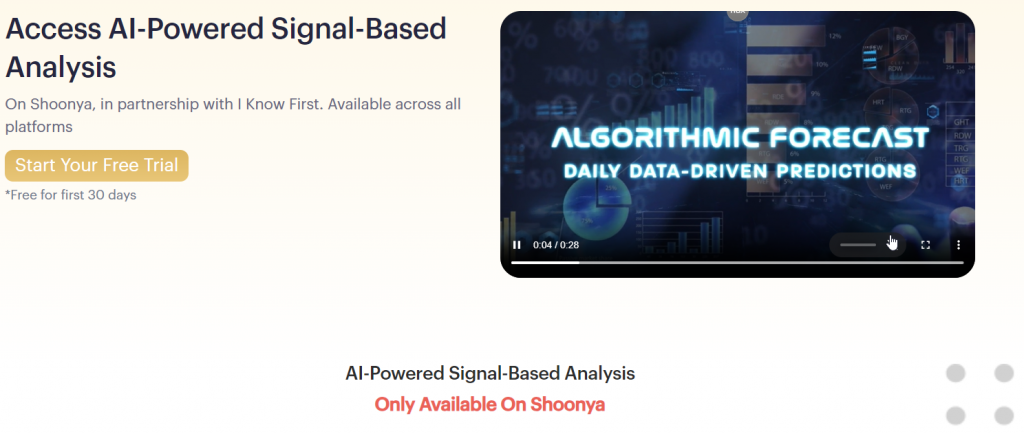20 Best Facts For Picking Coincheckup Websites
20 Best Facts For Picking Coincheckup Websites
Blog Article
Top 10 Tips To Evaluate The Strategy Customization Of Ai Stock Predicting/Analyzing Trading Platforms
The ability to customize the trading platform according to your goals in trading and risk tolerance and market conditions are an important feature of AI-based stock prediction and analysis trading platforms. A platform that provides an array of customizable options will improve your trading performance. Here are the best 10 ways to determine the capacity of platforms to tailor their strategies:
1. Evaluate Pre-Built Strategy Templates
A variety of templates: Find out whether the platform has various pre-built trading strategies (e.g. day trading, swing investing, long-term investment).
Utilizability: Find out how easily these templates can be modified to meet your specific needs.
Performance historical data. Find out if the platform has historical performance information for prebuilt strategies.
2. Examine Customized Strategy Development
Drag-and drop tools: Search for platforms with intuitive drag-and-drop interfaces for creating customized strategies.
Look for options to code. For advanced users it is possible to check whether the platform offers custom coding.
Flexibility: Ensure the platform lets you set your entry/exit parameters as well as risk management metrics and other important components of your plan.
3. Check for Backtesting Capabilities
Data historical: See whether there is enough records to backtest your strategies.
Modifiable parameter: Make sure you have the ability to adjust parameters when back-testing (e.g. indicators and timeframes).
Performance metrics: See if the platform provides precise measurement of performance (e.g. win rate Sharpe ratio, drawdown) to back-test strategies.
4. Evaluate Real-Time Strategy Testing
Paper trading: Make sure the platform allows you to practice or test your strategies without risking any capital.
Live testing - See if you can test strategies using tiny amounts to test how they work.
Real-time adjustments: Examine to find out if your plan can be adapted in real-time to market conditions.
5. Examine the degree of integration using technological indicators
Indicator library - See if a platform provides an extensive library of technical indicators, including moving averages (e.g. RSI), MACD or RSI.
Custom indicators: Ensure you can import or create custom indicators for your strategies.
Indicator combinations: Verify whether the platform supports the combination of several indicators to make more complex strategies.
6. Check for Risk Management Tools
Stop-loss/take-profit: Ensure the platform allows you to set stop-loss and take-profit levels within your strategies.
Size of your position. Make sure you have defined rules on the best way to handle your risk (e.g. set amount or percentage of your portfolio).
Risk-reward ratio: Determine whether the platform can set risk-reward ratios for specific strategies or trades.
7. Evaluate Multi-Asset Strategy Support
Asset classes: Make sure that the platform is able to provide strategies for a variety of asset classes (e.g. stocks, ETFs or options and forex).
Cross-asset Strategies: Determine whether it is feasible to develop strategies that combine multiple asset classes.
Market coverage: Determine whether the platform has the services you need (e.g. US, international or copyright).
8. Evaluate the automation, Execution and Execution
Automated trading: Ensure the platform is able to automate the execution of strategies based on defined rules.
Types of orders: Check the platform that supports various types of orders (e.g. market, limit, and stop) to carry out your strategy.
Latency - Verify the platform's capability to perform trades in a timely manner and efficiently, particularly when using high-frequency strategies.
9. Look for strategies optimization tools
Optimization of parameters. Be sure that your platform lets you optimize the parameters of your strategy (e.g. Grid search Genetic algorithms).
Machine learning Integration: Determine if a platform integrates machine-learning to improve and refine strategy.
Scenario evaluation: Determine whether your platform is able of testing different strategies for various market scenarios, such as bearish, bullish or volatile.
10. Review User Feedback and Community Support
Feedback from users: Conduct user research to assess the effectiveness of the platform in the development of a customized the strategy.
Community forums - Look to see if a platform has a forum that is active and where members can share their own strategies.
Support resources: Make sure the platform offers tutorials, webinars, or documents that will help users develop and optimize their strategies.
Bonus Tips
Trial period: Use the trial for free to test strategy customization capabilities.
Scalability: Make sure the platform is able to handle more complicated strategies in your trading expands.
Customer support: Check whether the platform offers assistance with strategy-related issues or queries.
The following tips can assist you in assessing the capabilities of AI trading platforms to tailor their strategies. You will be able decide which one best fits your needs in trading and allow for you to refine and implement your strategy. Platforms with strong customization capabilities can assist you in adapting to the changing market conditions and enhance the performance of your trading. Follow the most popular check this out about stock analysis tool for website tips including stock analysis app, ai stock trading app, ai investment app, trader ai, chatgpt copyright, chart ai for trading, using ai to trade stocks, ai stock trading app, ai for stock trading, ai trading bot and more.
Top 10 Tips On Evaluating The Scalability Ai Trading Platforms
It is crucial to evaluate the capacity and performance of AI-driven trading and stock forecasting platforms. This will guarantee that they can manage the growing volume of data as well as market complexity and the demands of users. Here are 10 top tips on how to evaluate the scaleability.
1. Evaluate Data Handling Capacity
TIP: Make sure that the platform you're considering can handle and analyze large datasets.
Why? Scalable platforms should be able to handle the growing volume of data without performance loss.
2. Real-time testing of processing capabilities
Tips: Make sure you check the ability of the platform to process real-time information streams, including live stock prices, or breaking news.
Why: The real-time analysis of trading decisions is vital because delays could lead you to miss opportunities.
3. Cloud Infrastructure and Elasticity: Check it out
Tips. Check if the platform utilizes cloud-based infrastructure, such as AWS, Google Cloud and Azure, which can expand resources according to demand.
Cloud-based platforms are a great way to gain elasticity. They allow the system to be scaled up or down depending on demand.
4. Algorithm Efficiency
Tip : Check the computational efficiency and accuracy of AI models to make predictions.
Why: Complex algorithms can become resource-intensive, so optimizing them is essential for scalability.
5. Study Parallel Processing and Distributed Computing
TIP: Make sure to check that the platform supports parallel processing frameworks or distributed computing frameworks.
The reason: These technologies speed up data processing and analysis on multiple nodes.
Review API Integration.
TIP : Make sure your platform integrates with other APIs, like market data providers and brokerage APIs.
The reason: seamless platform integration makes sure it is able to adjust to new sources of data or trading environments.
7. Analyze User Load Handling
Tip: Simulate the impact of high user traffic to test how the platform performs under stress.
Why: A scalable platform should maintain performance even as the number of users grows.
8. Review the model of Retraining and its Adaptability
Tip: Assess how frequently and efficiently the AI models are being retrained using new data.
The reason is that models must continuously adapt to the changing market in order to remain accurate.
9. Check for Fault-Tolerance and Redundancy
Tip: Make sure your platform has failover mechanisms to handle software or hardware failures.
Why: Because downtime is costly in trading, fault tolerance is crucial to scaling.
10. Monitor Cost Efficiency
Tips: Examine the costs of scaling the platform, including cloud resources, storage for data, and computational power.
Why is it important to keep a balanced balance between expenses and performance costs.
Bonus Tip: Future-Proof
Check that the platform incorporates the latest technologies (e.g. quantum computing, advanced NLP), and is able to adapt to changes in the regulatory environment.
These factors will help you evaluate the impact of AI-based stock prediction systems and trading platforms. They'll also make sure that they are robust and efficient capable of expansion and are future-proof. Take a look at the best copyright advisor for website advice including stock analysis websites, stock analysis app, ai for stock trading, chart analysis ai, stock analysis websites, ai trading platform, ai invest, ai stocks, best stock analysis website, coincheckup and more.